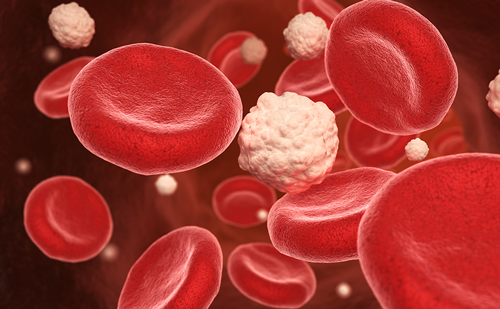EUROPEAN ENDOCRINOLOGY VOLUME 14 – ISSUE 2 – AUTUMN 2018
We are thrilled to welcome you to the Autumn 2018 edition of European Endocrinology. The journal will be available at the EASD congress in October 2018 and therefore has a strong focus on current practices and research in diabetes. Different areas are explored; new treatments for management, self-monitoring and flash monitoring of blood glucose, obesity and the financial burden of insulin therapy. Other areas of endocrinology are also discussed, including recent advances in the diagnosis and treatment of acromegaly, adrenocortical carcinoma and hypogonadism in male childhood. We would like to thank all of our contributing authors and our editorial board for their continuing support. We welcome all members of the endocrinology community to submit articles to our Spring 2019 edition. Read our call for submissions for more information, and please visit our submission system if you have a paper to submit. Happy reading!
Welcome to the latest edition of European Endocrinology, which features a range of articles describing current practices and research that directly affect endocrinologists, as well as being of interest to the wider biomedical community. Diabetes is the focus of several articles, reflecting the importance of this disease, the incidence of which is growing at […]
Expert Interview
Poor glucose control resulting from diabetes is responsible for the deaths of millions of people worldwide each year and reduces the quality of life for many more. As a result, research continues for new glucose-lowering drugs, as well as improved ways to manufacture and deliver insulin. In an expert interview, Chantal Mathieu, Professor of Medicine […]
Editorial
The glomeruli (also known as Malpighian bodies) were first described four and a half centuries ago, in 1666. Marcello Malpighi showed that these structures were a continuation of the renal vasculature. Two centuries later, in 1842, William Bowman detailed their architecture and demonstrated the continuity between the capsule and the proximal tubule. Physioanatomy The glomeruli […]
Diabetes is a heterogeneous metabolic syndrome characterised by the wide diversity of biomedical and psychosocial features. While the acute and chronic medical complications of diabetes have been recognised for a long time, the psychological and psychiatric aspects of diabetes have garnered attention only in the recent years.1 Mental health and diabetes Disorders such as anxiety, […]
The past decades have seen the introduction of a variety of oral antidiabetic drug (OAD) classes and drugs. The initial straitjacket approach, using traditional sulfonylureas and biguanides, has given way to a more flexible (and confusing) choice of drugs. Sulfonylureas, pioglitazone, dipeptidyl peptidase-4 (DPP-4) inhibitors, sodium-glucose co-transporter-2 (SGLT2) inhibitors, bromocriptine and colesevalam all vie for […]
Symposium Report
Self-monitoring of blood glucose (SMBG) levels was the standard of care for achieving tight glycaemic control in patients with diabetes for several decades. Systems for continuous glucose monitoring (CGM) were introduced around 15 years ago and are employed by an increasing number of patients. The tip of the glucose sensor used by these systems is […]
Reviews
According to the estimates of the International Diabetes Federation (IDF), one in every 11 adults of the global population has diabetes, with an overall disease prevalence of 425 million.1 This diabetes prevalence is expected to increase exponentially with time because of the global obesity epidemic related to physical inactivity and adverse food habits. Therefore, physicians […]
Type 2 diabetes (T2D) is a major risk factor for cardiovascular diseases (CVDs) such as stroke, myocardial infarction (MI) and peripheral vascular disease, as well as an independent risk factor for heart failure (HF).1,2 Patients with T2D and established CVD have a substantial reduction of life expectancy (for example, a 60-year-old man with CVD and […]
Intensive insulin therapy is recommended for the management of type 1 diabetes (T1D),1 and has been shown to be an effective and beneficial treatment modality for many individuals with type 2 diabetes (T2D).2,3 During the past decade, we have seen several new insulin preparations and delivery devices that enable individuals with diabetes to achieve near-normal […]
Acromegaly is a chronic disorder characterised by growth hormone (GH) hypersecretion, predominantly caused by a pituitary adenoma.1 Disease prevalence ranges from 2.8–13.7 cases and annual incidence is between 0.2–1.1 cases/100,000 people; however, real incidence is likely much higher.2,3 Average age at diagnosis ranges from 40–50 years4–6 and mean delay in diagnosis is approximately 10–11 years. […]
Adrenocortical carcinoma (ACC) is a rare endocrine tumour deriving from the adrenal cortex. Its estimated incidence is one per million/year,1 with an increased incidence in the first and fourth to fifth decades of life and with a higher prevalence in females (up to 60%).2 Prognosis is generally poor and 5-year overall survival is only between […]
In the adult male, hypogonadism is usually defined by the failure of the testis to produce physiological concentrations of testosterone and/or a normal number of spermatozoa.1 When due to abnormalities of the hypothalamic-pituitary axis, the condition is referred to as hypogonadotropic or central hypogonadism, whereas those due to testicular defects are called hypergonadotropic or primary […]
Original Research
The prevalence of diabetes continues to increase globally,1 and is projected to remain of importance to Sweden’s public health,2 given the higher risk people with diabetes face regarding disabling and/or life-threatening health problems and mortality.1,3 A recent estimate puts national prevalence at 7.0% (type 1 diabetes [T1D] and type 2 diabetes [T2D]); approximately 10% have […]
Given the global nature of the diabetes epidemic,1 this condition is of public health importance in Sweden.2 National prevalence in Sweden is approximately 7.0%, based on a recent estimate,1 and approximately 90% of cases are type 2 diabetes (T2D).1,3 This prevalence figure, which is growing over time despite stable incidence,4 has a direct impact […]
Unmet needs for people with T2DM using intensive insulin Despite advances in diabetes management, many people with type 2 diabetes mellitus (T2DM) fail to achieve optimal glycaemic control, as demonstrated in a 2016–2017 audit of England and Wales, in which only 67% of people with T2DM achieved target glycated haemoglobin (HbA1c) levels (≤58 mmol/mol).1 When glucose […]
The prevalence of overweight and obese people is increasing worldwide. This is accompanied with an increase in many diseases such as non-insulin dependent diabetes mellitus, hypertension, and even certain cancers.1,2 Obesity is defined as an excessive accumulation of body fat that is caused by the imbalance between energy intake and energy expenditure.2 Adults are one […]

Trending Topic
Tirzepatide is a first-in-class novel dual glucose-dependent insulinotropic peptide (GIP)/glucagon-like peptide-1 (GLP-1) receptor agonist (twincretin), formulated as a synthetic peptide containing 39 amino acids based on the native GIP.1 Tirzepatide has a GIP receptor-binding affinity comparable with native GIP and five times lower GLP-1 receptor affinity than native GLP-1.1 Several systematic reviews and meta-analyses (SRMs) have been […]
Journal Archive
touchREVIEWS in Endocrinology (previously European Endocrinology) is a peer-reviewed, free-to-access, bi-annual journal comprising review articles, case reports, editorials, special reports and original research. It features balanced and comprehensive articles written by leading authorities, addressing the most important and salient developments in the field of endocrinology.
Latest articles videos and clinical updates - straight to your inbox
Log into your Touch Account
Earn and track your CME credits on the go, save articles for later, and follow the latest congress coverage.
Register now for FREE Access
Register for free to hear about the latest expert-led education, peer-reviewed articles, conference highlights, and innovative CME activities.
Sign up with an Email
Or use a Social Account.
This Functionality is for
Members Only
Explore the latest in medical education and stay current in your field. Create a free account to track your learning.




















